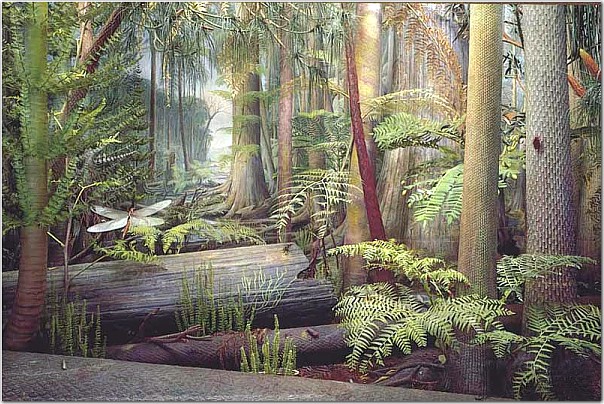| 
The ancestors of modern dragonflies flew
above the Earth long before dinosaurs walked upon it. The
Protodonata were among the 1st winged insects on Earth.
Fossils of these early dragonflies are over 300 million
years old. In the Carboniferous Period, the time in Earth’s
history from 360 – 290 million years ago, ancient
dragonflies shared the land with early amphibians and the
first reptiles. The forests were dominated by plants related
to modern day horsetails and club mosses. Today’s
trees and flowering plants had yet to evolve and the first
dinosaurs would not appear for another 100 million years.

Carboniferous Period forest (from a display at the Chicago
Field Museum).
By the Permian Period (290 – 248
million years ago), modern looking dragonflies had evolved.
The earliest fossils thought to be true dragonflies date
to 250 million years ago.
|